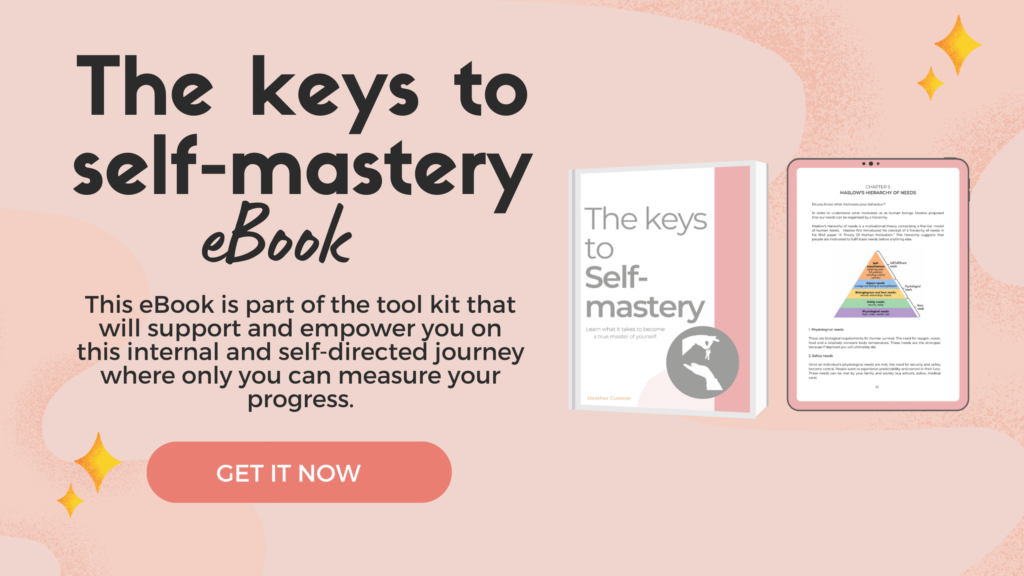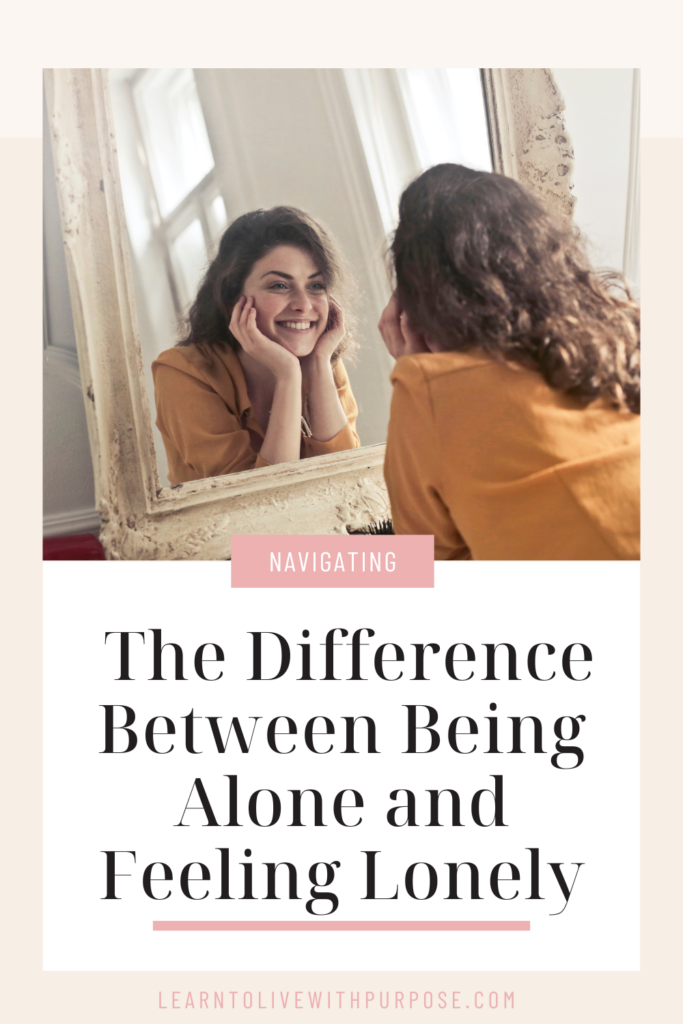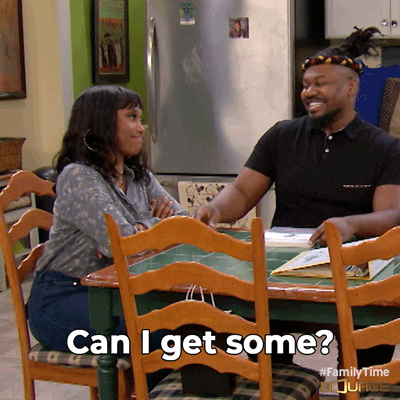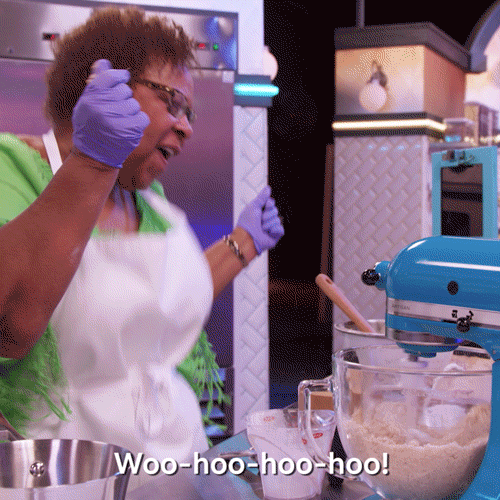
In a world that often emphasises the value of social connections, there’s an important distinction to be made between being alone and feeling lonely.
Many people associate solitude with a sense of isolation or sadness, but the truth is that being alone can be a fulfilling and rejuvenating experience. 😊
In this blog post, I will explore the nuances of being alone versus feeling lonely, understanding the importance of solitude, and embracing the positive aspects of both states.
Let’s get to it. 💕
The Difference Between Being Alone and Feeling Lonely:
Being Alone:
Being alone is a state of physical solitude, where you find yourself without the company of others. It can occur by choice or as a natural consequence of circumstances. Spending time alone provides an opportunity for self-reflection, relaxation, and personal growth.
It allows you to engage in activities that bring you joy, pursue hobbies, or simply enjoy a moment of peace. Being alone can be a deliberate choice, a time to recharge and connect with oneself. 🥰
Feeling Lonely:
Loneliness, on the other hand, is an emotional state that arises from a perceived lack of meaningful connections. It’s possible to feel lonely even in a crowded room if the connections are superficial or unfulfilling.
Loneliness is often characterised by a sense of emptiness, isolation, or a longing for deeper human connections. It’s a complex emotional experience that can impact mental and physical well-being. 😟

Embracing the Positive Aspects of Being Alone:
1. Self-Discovery:
Being alone provides an opportunity for self-discovery. It allows you to explore your thoughts, feelings, and interests without external influences. Use this time to reflect on your goals, values, and aspirations. Self-discovery is a crucial aspect of personal growth and can lead to a deeper understanding of oneself.
2. Independence:
Embracing solitude fosters independence. When you’re comfortable being alone, you become more self-reliant and less reliant on others for your happiness. This independence can empower you to make decisions based on your own needs and preferences, leading to a more authentic and fulfilling life. 🥰
3. Creativity:
Solitude often sparks creativity. When you’re alone with your thoughts, you have the mental space to generate new ideas, think critically, and engage in creative pursuits (yaay). Many artists, writers, and innovators find inspiration in moments of solitude, leading to the creation of meaningful and impactful work. 🎨
4. Rest and Rejuvenation:
Being alone allows for rest and rejuvenation. In a world filled with constant stimuli, taking time for solitude can be a form of self-care. It provides an opportunity to relax, recharge, and focus on activities that bring you peace and joy, contributing to overall well-being.

Addressing the Challenges of Feeling Lonely:
1. Cultivating Meaningful Connections:
If loneliness arises from a lack of meaningful connections, focus on cultivating relationships that nourish your soul. Seek out individuals who share your values and interests. Join clubs, organisations, or communities where you can meet like-minded people. Focus on getting yourself out there. Quality connections are often more fulfilling than a large social circle. 🫂
2. Volunteering and Giving Back:
Engaging in volunteer work or contributing to your community can alleviate feelings of loneliness. By helping others, you not only make a positive impact on the world but also connect with individuals who share a common purpose. Volunteering provides a sense of belonging and fulfillment.
3. Seeking Professional Support:
If loneliness becomes a persistent and overwhelming emotion, maybe consider seeking professional support. A therapist or counselor can provide guidance and a safe space to explore the root causes of loneliness. Addressing these issues with professional help can lead to a more fulfilling and connected life. 🫶
Finding Balance:
The key to a fulfilling life lies in finding a balance between being alone and fostering meaningful connections. Embrace solitude as a time for self-discovery, creativity, and rejuvenation. At the same time, actively cultivate relationships that bring joy and fulfillment. Recognise that both states are essential for a well-rounded and satisfying life. 💕
Conclusion
Being alone and feeling lonely are two distinct experiences, each with its own set of opportunities and challenges. Embracing solitude allows for self-discovery, independence, creativity, and rest. However, if loneliness creeps in, it’s crucial to address it by cultivating meaningful connections, volunteering, or seeking professional support. You are not alone. ❤️
Understanding the nuances between being alone and feeling lonely empowers you to navigate both states with intention and purpose. Ultimately, finding a balance between solitude and social connections contributes to a rich and fulfilling life. Embrace the positive aspects of being alone, foster meaningful connections, and savor the journey of self-discovery in this beautiful dance between solitude and companionship.
Pin this post for a reminder 📌 👇

Related Blogs
Things to Say “No” to for you to Live a Happier Life
How to Stop Settling For Less Than You Deserve
How to Become the Best Version of Yourself: A Guide For 20-Somethings
Dedicating your precious time to help make someone’s day even better is one of the best ways you can use it.
I personally try to do a minimum of 1 act of kindness a day, whether it’s randomly buying my little brother his favourite Ben and Jerry’s ice cream or making my sister breakfast just in time after she finishes her workout. These random acts of kindness lift my spirits when I see their reaction to them. Seeing a loved one gleam with happiness from something I’ve done for them is an indescribable feeling that I always want to keep getting.
It doesn’t only have to be a loved one you can share your love with! A stranger will appreciate your love too.
“The secret to living is giving”
Tony Robbins
Below are 10 different small acts of kindness that have the power to lift anybody’s spirit.
1. Compliment them unexpectedly
It definitely feels great when someone compliments your new shoes or your new hair colour but unexpected compliments can delve even further, such as telling your friend you really enjoy their outlook on life or telling a new mum she’s doing an amazing job. We all daily think of split-second compliments when we see or hear something that we like about someone but don’t always tell them. This could be for many reasons such as :
👉 You think that the person won’t accept the compliment which would make you feel awkward.
👉 You’re introverted.
👉You rehearse the compliment in your head so much that you talk yourself out of telling the person.
I urge anyone who has positive thoughts when they think about others to share them, as it will make you happy and will definitely do the same for them.
2. Give them a surprise gift
Who doesn’t love getting gifts? I definitely do! Gifts are not just for birthdays and other special occasions. Sending someone a random gift because you saw something that reminded you of them has LOADS more meaning than the conventional gift-giving protocol. Everyone gets satisfaction from knowing that they have been thought about. What have you seen or read recently that would be the perfect gift for someone you know?

Want to gift someone something useful and practical? Check out my printables here > PRINTABLES
3. Let someone know how much they mean to you
Life’s too short to conceal your feelings, whether it’s your partner, your friend or your sibling. Letting them know how you feel and the impact they have on your life is the best way to build on your relationships as both you and the person feel loved, and who doesn’t want to feel that?
A lot of people go through life assuming that their feelings for others are self-evident.
It’s not.
No one is a mind reader and you never know how long someone has got left on this Earth. Let them know how much you mean to them.
4. Pay for someone’s meal
This doesn’t necessarily have to be for someone who can’t afford a meal, it could be for the person behind you in the line or you could buy ice cream and give it to the first person you see on the street. The act of surprising somebody with food (FREE FOOD at that) is a heartfelt gesture that anyone would appreciate.
That would definitely make my day 😂
5. Hi 5 a stranger
Now, I’m not going to lie to you. I’ve heard some awkward stories of people doing this, whether the person just smiles back and doesn’t Hi 5 or they just simply look at you like you’re mad. But, I’ve also heard great stories of other people Hi-fiving back with huge smiles on their faces and getting excited at the fact they were chosen by a random stranger to engage with. Some people like being noticed in public and others don’t, don’t get discouraged if someone doesn’t reciprocate the same energy you give, there’s someone out there who will.

6. Go out your way to make someone laugh
This one is really fun. Whether you’re a natural-born comedian or someone who loves to repeatedly search up “Dad jokes” to make someone laugh. Going out of your way to make someone laugh so hard they think that they’re dying is both as beneficial for you as it is for them. Have you ever had one of those laughing fits with your friends where you both keep adding stuff to the joke that makes it even funnier and you end up on the floor with a severe stomach cramp? I hope you have because it’s the best type of laughter!
Here is a couple of Dad jokes I’ve regrettably heard in my time:
1. Q. What’s 8?
A. 0 with a belt.
2. Q. Why did the picture go to jail?
A. Because it was framed. 🙄
And my personal favourite…
3. Q. What do you call a woman who sets fire to all her debts?
A. Bernadette
I know, I know. 🤦♀️
7. Give surprise notes
My family has a lovely habit of leaving handwritten notes on each other’s beds for numerous reasons such as:
👉 One of us is having a hard time and needs a pick me up.
👉Something great has happened and want to remind them how proud we are.
👉Came across an interesting/motivational quote.
Leaving someone a surprise message is a great way to let someone know that you’re thinking of them, and it’s a keepsake that can be kept forever. Think about someone who has done something amazing recently or is going through a hard time and what you can say to uplift them.
8. Bake for someone
Given that I’ve been in the baking industry for about a decade, this definitely needed to be on the list! Over the years I’ve seen how baked goods have filled people’s hearts with joy and actually make some people cry (in a good way I promise). Going out your way to go to the supermarket to buy all the ingredients, to then get home and bake which usually results in your kitchen looking like a tornado hit it (always remember to look at the setting of your mixer before you start, it gets the best of us). You’ll put a lot of work in and it will show with whatever you make, so get your bake on.
Pop me an email if you want me to share some baking tips and tricks!

9. Help someone network
We’ve all heard it before…“It’s not what you know it’s who you know”. It’s vital to network in both your personal life and if you have one, your business life. Introducing two or more people together because you know their skills will complement each other or they can benefit each other’s lives in one way or another, is a great way to get things going. Whether it’s helping someone find a business partner or simply someone to go the gym with. Being that bridge in connecting people together can cause life-changing moments to happen. Wouldn’t you want to be a part of that?
10. Ask someone if you can help them with their errands
If you’re lucky enough to have some free time on your hands helping somebody out can take a load off their mind, whether it’s driving someone to the shop or helping someone pack for a vacation, no one is going to say no if you’re trying to make their lives easier for them for the sake of just being a great person. Time is precious, so instead of letting it slip you by go out of your way to help somebody in need and show them how much you care.
Those are my top 10 ultimate ways to make someone’s day. Whether you pick all 10 or just one, I guarantee that implementing any one of these tips into your life is going to brighten a few people’s days!
Which one are you looking forward to doing?
Related Blogs
How to create the best daily routine
Did you know that people on my email list sometimes get exclusive discounts on my products? Join the community and save yourself some coins!
Freshly-squeezed inspiration, and no-nonsense tips + tricks to improve your life delivered to your inbox weekly.
Subscribe to my newsletter
Subscribe
You're all signed up!
Be sure to whitelist our email address so that all the goodies make it to your inbox.
